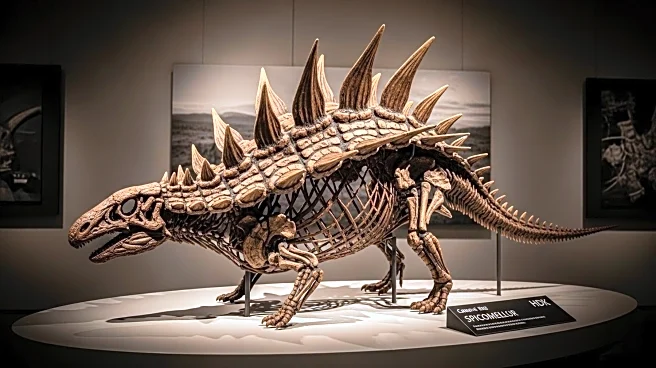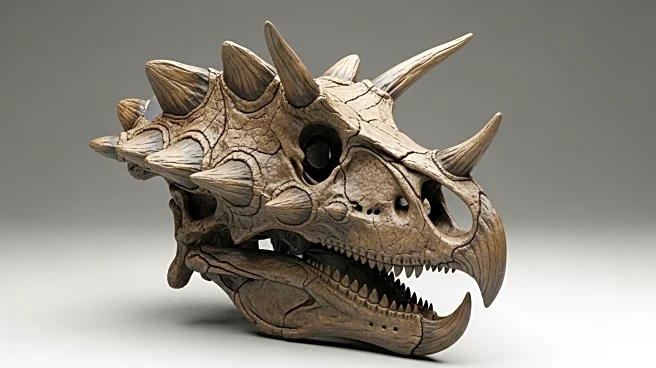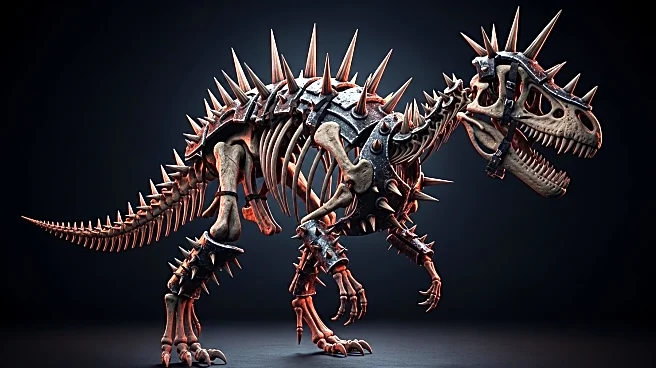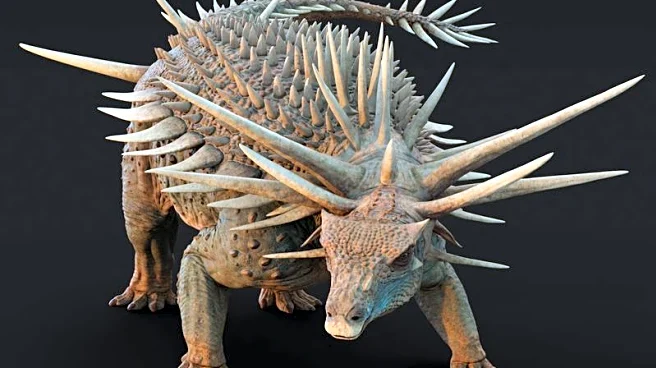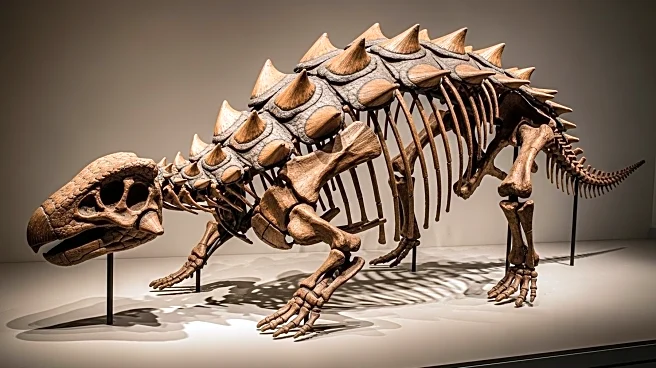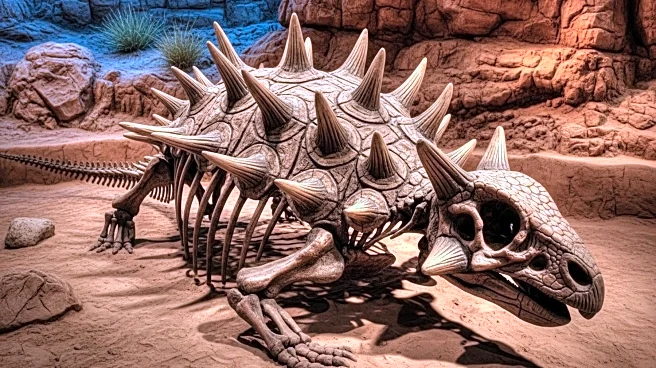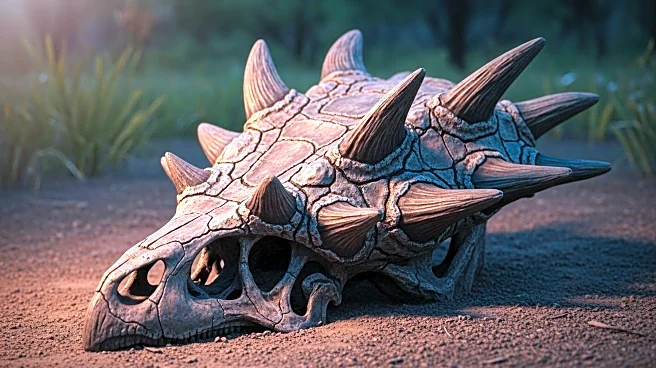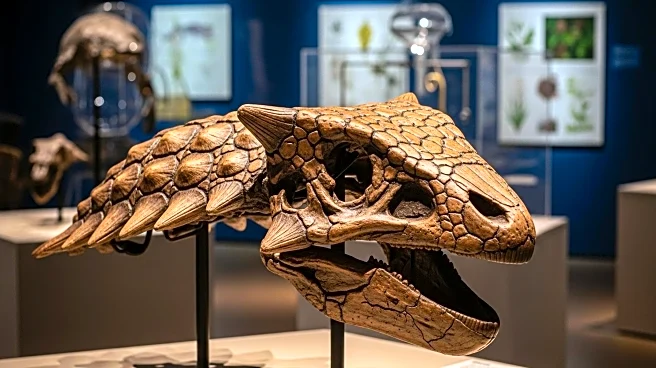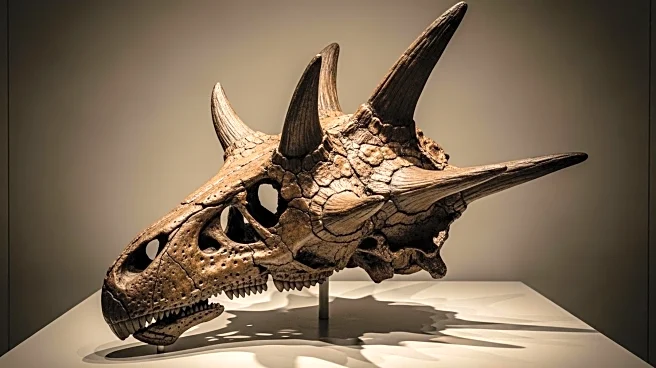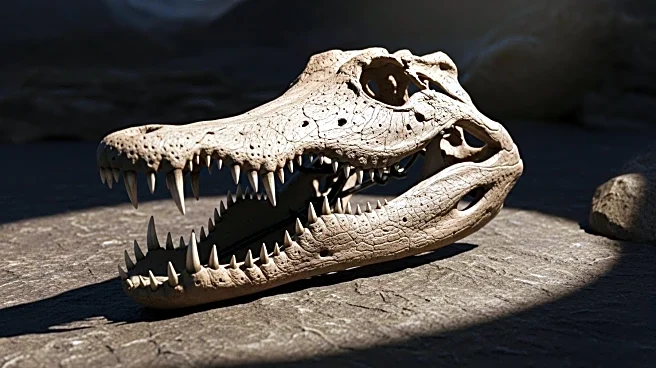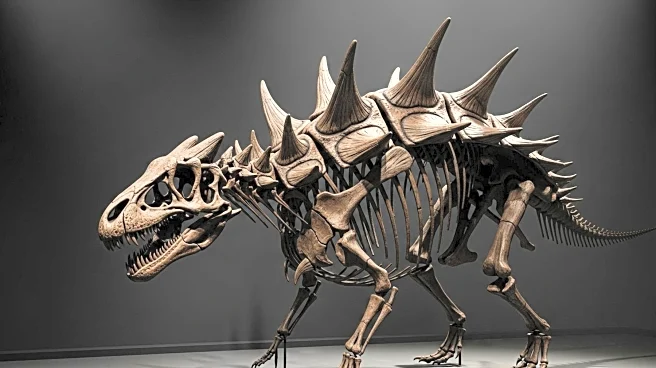What's Happening?
Paleontologists have uncovered fossils of a dinosaur named Spicomellus, described as one of the 'strangest' ever found due to its unique armory of long bony spikes and a tail weapon. The discovery, published in the journal Nature, reveals that Spicomellus is the world's oldest ankylosaur, a herbivorous dinosaur group known for their tank-like bodies. The dinosaur roamed the Earth approximately 165 million years ago. Initial findings were based on a single rib bone discovered in Morocco in 2019, but new remains have provided a clearer picture of its unusual anatomy. The fossils show that Spicomellus had bony spikes fused onto all of its ribs, a feature not seen in any other vertebrate species, living or extinct. This discovery has led scientists to reconsider theories on ankylosaur evolution, as Spicomellus's armor is far more elaborate than previously expected for early ankylosaurs.
Why It's Important?
The discovery of Spicomellus is significant as it challenges existing theories about the evolution of ankylosaurs, suggesting that these dinosaurs may have developed complex armor much earlier than previously thought. This finding could reshape scientific understanding of dinosaur evolution and adaptation strategies in response to predatory threats during the Cretaceous period. The unique features of Spicomellus, such as its fused spikes, provide new insights into the diversity and complexity of dinosaur species, highlighting the evolutionary innovations that occurred in prehistoric ecosystems. This discovery also underscores the importance of paleontological research in uncovering the mysteries of Earth's ancient past.
What's Next?
Following the discovery of Spicomellus, researchers may conduct further studies to explore the evolutionary pathways of ankylosaurs and other dinosaur species. This could involve re-examining existing fossil records and searching for additional specimens that might provide more information about the development of defensive adaptations in dinosaurs. The findings may also prompt a reassessment of the ecological dynamics during the Cretaceous period, particularly concerning predator-prey relationships and survival strategies. Scientists may collaborate internationally to expand the scope of research and integrate new technologies in fossil analysis.
Beyond the Headlines
The discovery of Spicomellus raises intriguing questions about the evolutionary pressures that led to the development of such unique armor. It suggests that ankylosaurs may have faced significant predatory threats, necessitating advanced defensive mechanisms. This could lead to broader discussions on the role of environmental factors in shaping evolutionary paths and the adaptability of species in response to changing ecosystems. Additionally, the unusual features of Spicomellus may inspire further exploration into the genetic and developmental processes that enabled such distinctive traits.
